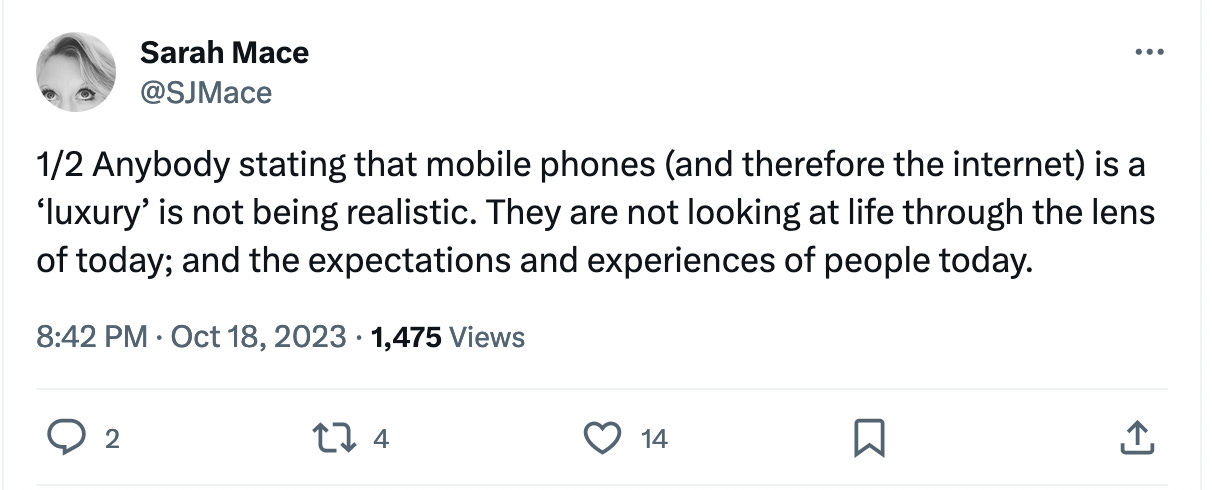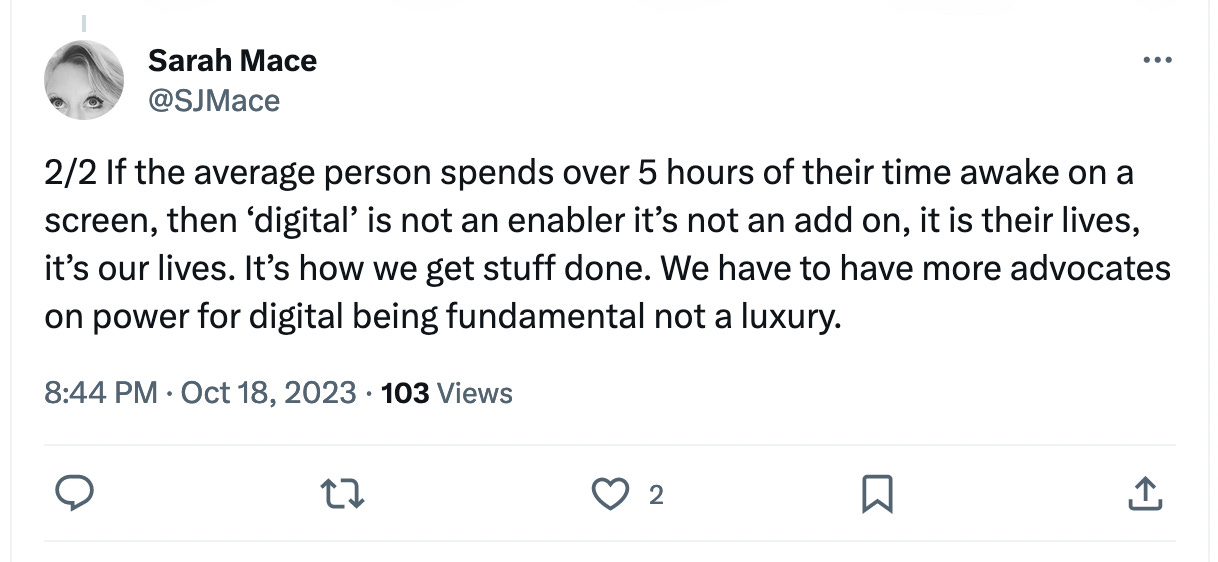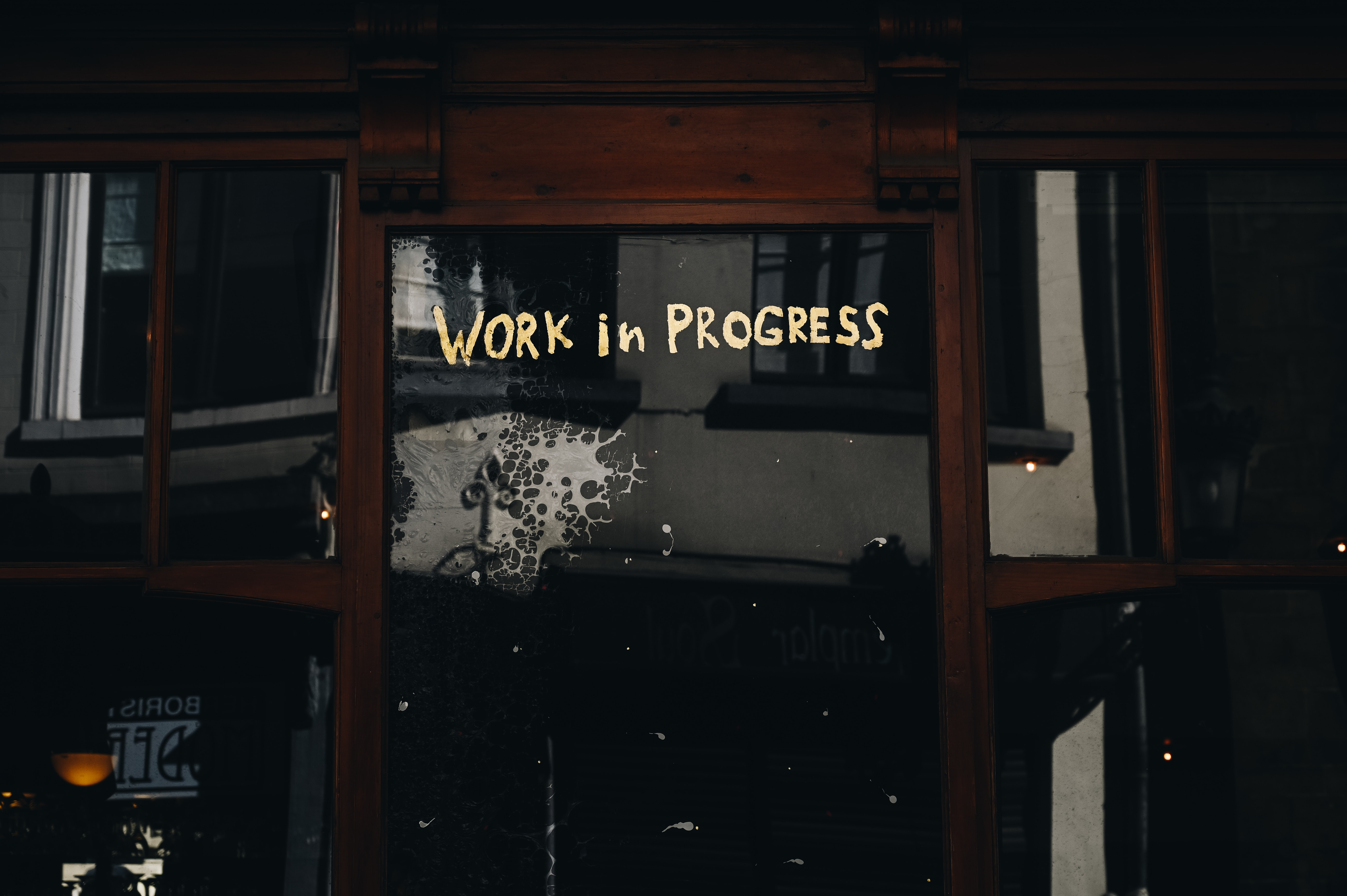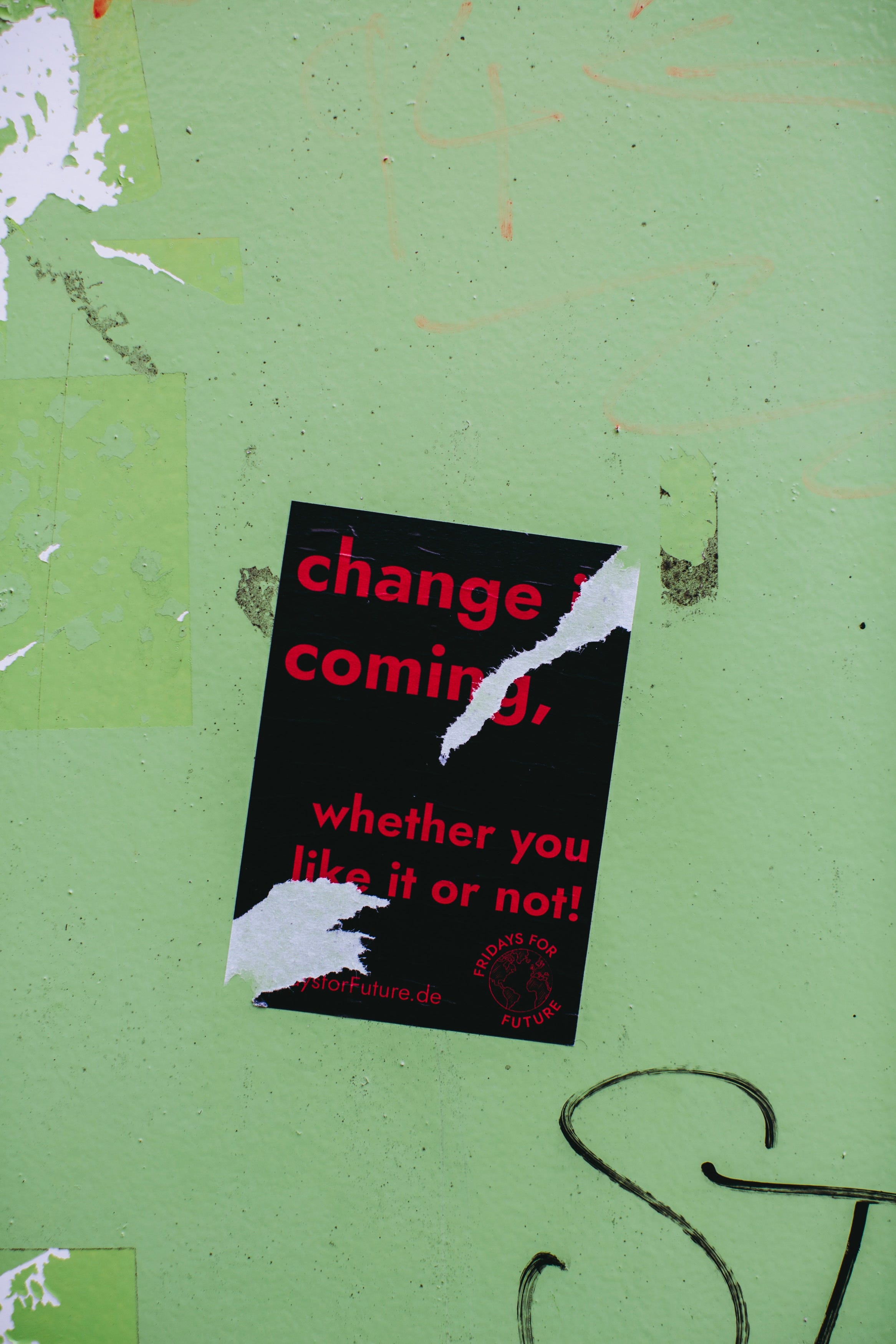Is digital important?
A longer read. Pondering an assumption and suggesting some answers.

A new study was published at the end of June this year which looked at “Measuring the economic value of museums and galleries digital offers”.
This coincided with something I was pondering whilst on a 2-month bike ride around Europe:
What is the value of digital? Is it actually important?
And, if we think it is, how do we make that case?
I am someone who is comfortable with digital technologies, tools, thinking, ways of working.
I think digital is an exciting and powerful way to reach and engage more people in more ways.
I know that not everyone thinks this.
But I do not think my perspective is just blind evangelism.
These two tweets from Sarah-Jane Mace do a good job of describing why I think a focus on, and prioritisation of, digital is important.


Some context

Friends who work in digital-focused roles in other sectors are sometimes surprised by the conversations I have in the cultural sector.
One friend in particular, who works with a lot of very large multi-nationals on digital transformation projects, is regularly horrified by ‘how behind’ the sector seems (she cares deeply about the cultural sector and it is worrying to her that the case for the role of digital is still having to be made, and regularly remade in our sector).
But that is the reality, frustrating though it may be.
The culture sector is not alone in this.
But we (digital professionals) still have to make and win the case for the importance of digital activity as a part of the answer to the many challenges the sector is facing.
The adoption and usage of digital tools and ways of working has developed in different parts of the cultural sector in different ways and shapes, with different priorities.
Where we are now, there is still a long way for all parts of the sector to go, and we are proceeding in an extremely asymmetrical way (I’ve written a bit about that elsewhere).
And this is a long-term problem for the sector.
"digital moves too fast to wait. If an organisation waits until best practice is established it will be too late.
That or best practice will already have changed.
Organisations cannot wait. If they do they will be too far behind the competition and will become obsolete"
Paul Boag
A layer for everything

It is now the case that, to a greater or lesser extent, digital could be an element of almost everything your organisation does (whether or not it actually is, is another question entirely).
Digital can be a golden thread that enhances every aspect of your organisation’s activity from artistic activity through operations and administration into education, audience experience, and more.
We hear a lot about digital transformation.
But examples of true digital transformation (i.e. a complete reshaping of your entire business, ways of thinking, and strategy), of the type that the Netflixes of the world have undergone, are few and far between.
And I don’t think that over the next 3-5 years that this level of change is realistic for (m)any cultural organisations to consider.
Instead the sector should, I believe, focus on embedding a meaningful layer of digital activity across the full spectrum of their operations.
That in turn will begin the conversations and processes that may (eventually) lead to more far-reaching change.
But if we manage to achieve this level of change in the short to medium term it will feel transformational for most organisations because of the culture, system, process, and mindset changes that will accompany it.
However achieving that level of digital maturity often feels like a challenging goal to engage decision-makers and leaders with.
Value
Here are a couple of findings from the DCMS research I linked to at the top of this piece:
“there is a strong overlap between the ‘physical’ and digital offers of arts and cultural institutions in the minds of the public. As such, when individuals are asked to value the work of galleries and museums, they may struggle to separate the two”
This echoes the point that Sarah makes, for audiences the difference between online and offline experiences is ceasing to be as strong a binary as it was in the past.
Amongst returned users, those who had previously engaged with the digital offer were willing to pay more for the digital offer compared with those who had visited the physical site’s offer
This underlines the importance of your digital offer in building and sustaining audience awareness and trust.
It also highlights the potential ‘flywheel’ effect of investing in digital.
I used the word ‘potential’ there, because as a sector we aren’t operating with a real focus on this area, so we don’t know.
We are frozen between a status quo that isn’t working, and an unknown future.
Why change?
The most dangerous answer to the question “why do we do it this way?” is “because we have always done it that way”.
The most dangerous answer to the question who is this for?” is “it’s for everyone”.
What we all do is only of interest to a niche audience at any given time.
And there is no better way to find, reach, gather, engage, and serve a niche audience at scale than via the internet.
The Victorian model of constructing a shining palace and filling it with culture to which access is then mediated is no longer working.
Economically, ethically, sustainably, this is a model that needs to evolve.
Digital gives us unique tools to flatten and broaden the dynamic around cultural access and engagement.
There are 5.2 billion people with internet access worldwide.
No other medium enables the simultaneous reach and scale that digital does.
Our buildings are still of vital importance, but our elevation of the in-person experience as the only thing that matters has to end, or at least evolve.
As Annette Mees, the Artistic Director of Audience Labs, has said “cultural organisations are more than the buildings they inhabit - they are their work, their artistic community and their audiences”.
If the pandemic helped to prove anything it is this point, that cultural organisations are more than just their buildings.
Our buildings still have a role to play, but when we are working at the scale of the internet their role is as the engine of a bigger machine.
We should think of them as our workshops, our studios, our production facilities, our newsrooms.
But they are not the only thing that matters.
It is with people - our ideas, our skill, our knowledge, our creativity, and how that connects with audiences - that the value really resides.
And our people and experiences do not only ever need to exist and meet visitors or an audience within the building-based context of the past.
The answers to the new and emerging challenges of today are not the same as the answers to the challenges of the past.
14 years ago I wrote that digital had disrupted almost every other industry, why did the cultural sector think it was different or special?
We’re not.
Tarek Iskander, CEO and Artistic Director of Battersea Arts Centre in the UK sent a rather despairing tweet recently that sums up the problem.

This is no longer really a philosophical consideration, or a question of choice.
Technological change is now so rapid and wide-reaching that to ignore it is to resign yourself to irrelevance.
And a recent McKinsey report identified the same issue.
Their The arts in the UK: Seeing the big picture report pointed to both the ‘integration of technology’ and ‘collaborating for innovation’ as key priorities.
Rethink
We also need to rethink the primacy of the in-person experience, a conversation that I’m well aware most sector leaders do not want to have.
They grew up with and are passionate about the in-person experience, that is what they’ve worked their careers for, I understand that, but the world is changing.
Rather than just seeing digital as the funnel through which people find out about, and buy tickets for, an in-person experience.
Or the place they go after an in-person experience to find out some more information.
Of course digital is great at playing a role in both of those scenarios
But we need to be creating longitudinal relationships with our audiences where we are showing up consistently, and being valuable (the folks at Storythings have written a great recent piece on value propositions).
Digital is the best way to do this.
It’s all life

Returning to Sarah’s tweet.
In the UK, in 2022, adults spent 5 hours a day on their devices - that is in addition to any “screen related work”.
This has increased 2 hours a day since 2020.
There is no differentiation between our ‘online’ and ‘offline’ lives.
It’s just life.
Digital tools help us find and enjoy information, content, culture, experiences.
They allow us to catch up with friends. And to meet new people.
They enable us to be creative, and to share those creations with the world.
They are how we access government services.
They facilitate everyday tasks around shopping, and banking, and travel, and learning a language, and taking photos, and making and keeping appointments.
Around a third of marriages are between people who met online.
Digital tools underpin and enable many of the things we do in our jobs.
Digital discourse shapes our politics, our media, our society at large.
Digital is how we learn, socialise, bank, shop, and entertain ourselves.
By not having meaningful digital programmes and presence, by not activating a meaningful digital layer across everything we do, we are largely absent from the spaces in which most people spend a large part of their lives.
This is a strange choice to actively make.
The world has changed.
Curiosity about what we can do differently, radically differently, must be part of our approach.
Digital is important.
“A wise person changes their mind, a fool never will”
